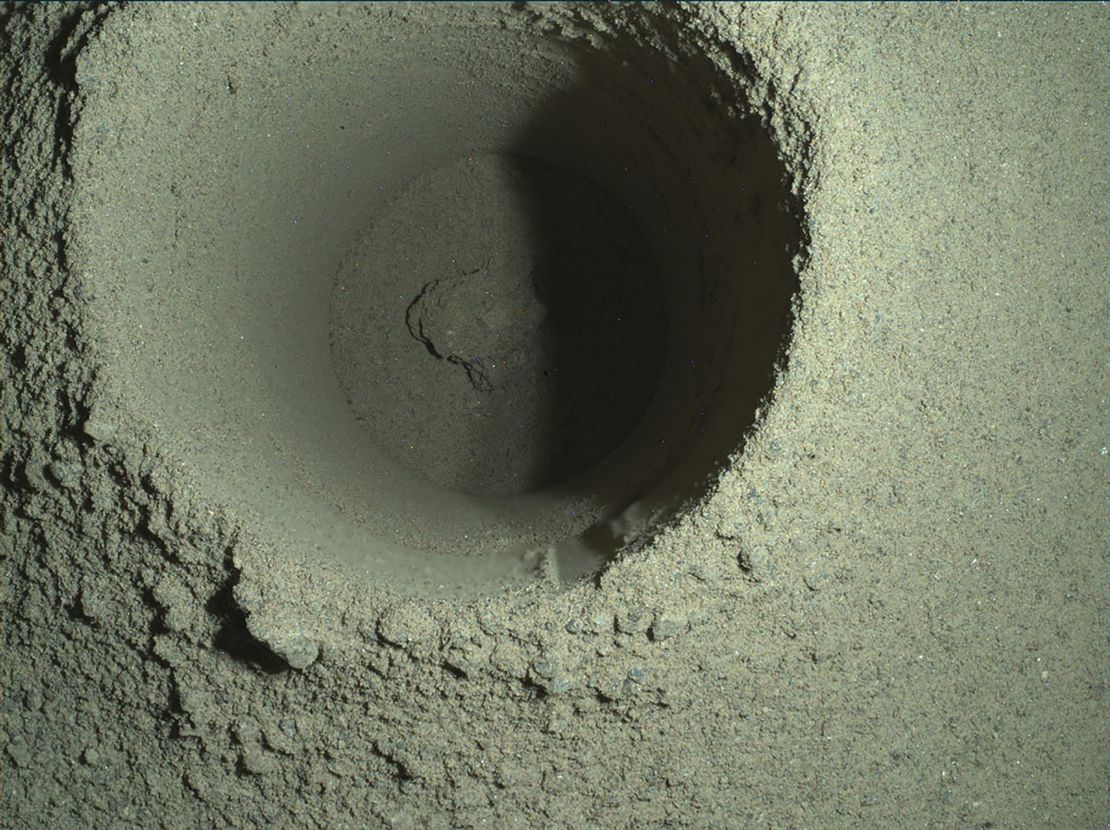Sign up for CNN’s Wonder Theory science newsletter. Explore the universe with news on fascinating discoveries, scientific advancements and more.
The Perseverance rover attempted to collect its first sample of Mars last week, but it seems the red planet wasn’t ready to cooperate.
In the wee hours of August 6, more than 90 engineers and scientists awaited the first data from Perseverance’s drilling attempt. The information sent back to Earth by the rover showed the rover’s corer drilled 2.8 inches (7 centimeters) into the rock. Perseverance also sent back an image of the material around the borehole produced by drilling.
All of this was a good sign. The team tried to get some rest before the next data set came down six hours later, according to Louise Jandura, chief engineer for sampling and caching at NASA’s Jet Propulsion Laboratory in Pasadena, California.
The next download from Perseverance confirmed that the sample tube had been sealed and safely stored on the rover, and the team was thrilled by the success of this maneuver.
Their elation was short-lived, however, because when the rover sent back the volume measurement of the tube as well as an image of the tube, it was empty. That’s when the team went into “investigation mode,” Jandura wrote.
After two days of going through all of the data, the team determined that the drilling went as planned. But there is no evidence of an intact core, or pieces of the core, on the Martian surface.

Measurements and images “lead us to believe that the coring activity in this unusual rock resulted only in powder/small fragments which were not retained due to their size and the lack of any significant chunk of a core. It appears that the rock was not robust enough to produce a core,” Jandura wrote.
While there is material visible in the bottom of the cored hole, as well as in the pile of cuttings around the hole, it’s difficult to distinguish which material is from the actual core. The rock was likely too dry and crumbly to produce an intact core as Perseverance drilled into it, creating powder instead.
“Both the science and engineering teams believe that the uniqueness of this rock and its material properties are the dominant contributor to the difficulty in extracting a core from it,” Jandura wrote.
But Perseverance and her team aren’t giving up. The rover is moving to a new sampling location where the team expects to find sedimentary rocks, like the ones they tested drilling on Earth ahead of launch.
The Ingenuity helicopter has been and will continue to conduct aerial scouting in his region to help the team determine the next best sample collection site. The rover will make its next attempt in early September.
Although Perseverance wasn’t able to collect a sample on its first outing, the team was encouraged that the rover “achieved the first complete autonomous sequence of our sampling system on Mars within the time constraints of a single Sol,” which is a day on Mars.
“The hardware performed as commanded but the rock did not cooperate this time,” Jandura wrote. “It reminds me yet again of the nature of exploration. A specific result is never guaranteed no matter how much you prepare.”





